

Thomas Partleton (c1732-1801)
Thomas is, by all the evidence, the first man to bear the surname Partleton in London.
He seems to suddenly spring from nowhere into the record in 1759 when he was married in London. There are no Partleton records in London before that date.
We don't known when or where Thomas was born, so we shall have to begin with that marriage record: the date - Saturday 02 June 1759: the place - the church of St James Westminster, on London’s busy Piccadilly:

This marriage record is held at Westminster Archive; the horizontal lines are scratches on the microfilm which is rather old, but it's clear enough.
Thomas' bride, Hannah Dunsdon, had been baptised as a baby, in the same church, 23 years before the couple were married. She was born in 1736, so I am going to tentatively assign Thomas Partleton a birth date of 1732 to 1736.
So, let's navigate to the church, St James Westminster. It's on London's bustling Piccadilly, opposite Swallow Street, at the location circled in yellow in John Cary's 1785 map below:
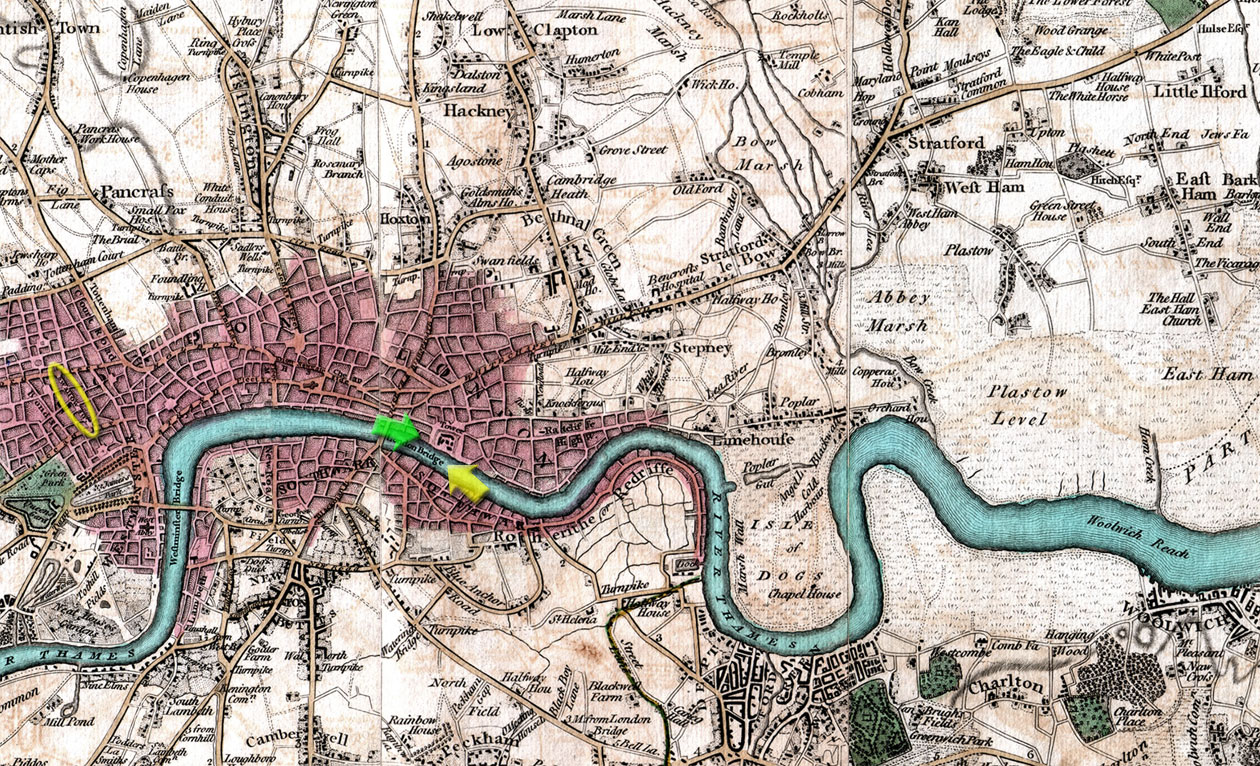
Here's the church in a 19th century engraving by artist Thomas Hosmer Shepherd. Thanks Thomas!
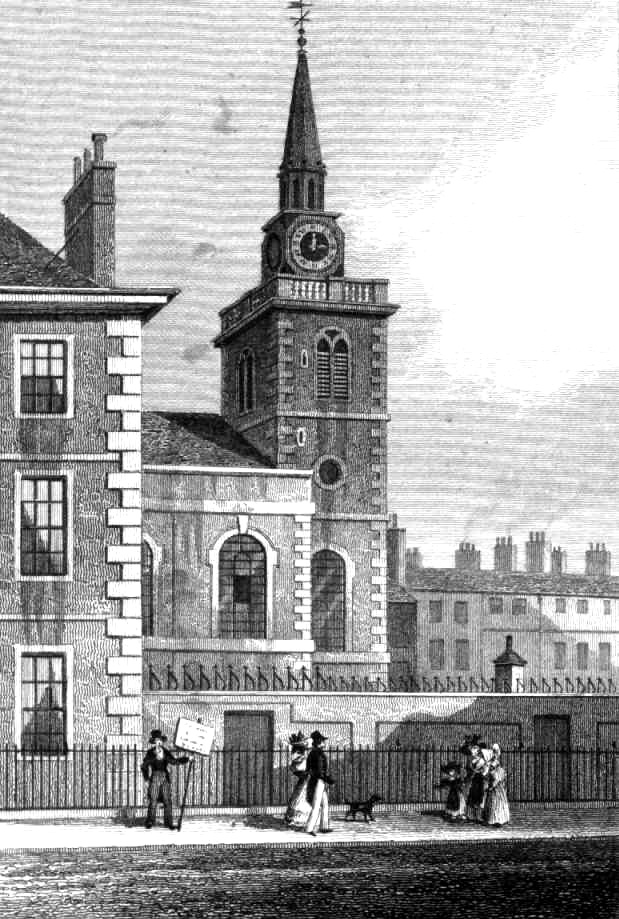

The above view was drawn from the point of the red arrow in the map below:
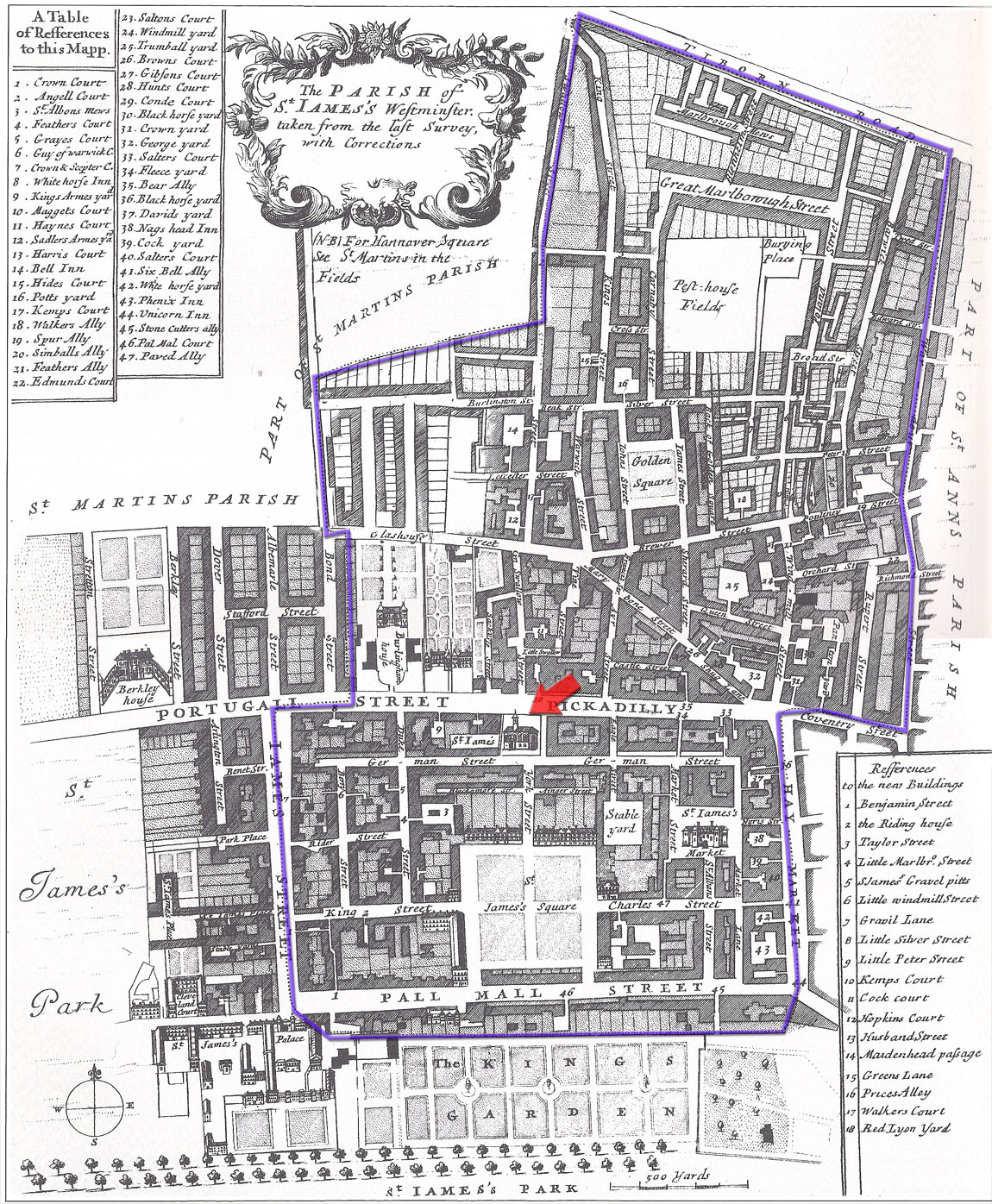
This gorgeous map of the parish of St James comes from historian John Strype's staggering Survey of the Cities of London and Westminster published in 1720.
In 1759, Thomas Partleton and his wife Hannah are living in one of the streets within the blue parish boundary, very likely to be in the streets north of the church.
As we mentioned before, Hannah Dunsdon's baptism can be found in the 1736 parish register for St James, for 30 September:

But when we trawl through those same parish registers, line by line, for the baptism of Thomas Partleton - as Terry Partleton has done - we don't find Thomas. He wasn't born in the parish: he is the first - and only - man with the surname Partleton in London at this time.
Let's park Thomas in 1759 for the time being because we are going to take a diversion into the the history of the Parish of St James Westminster.
We have another lovely map showing the (future) location of the parish, part of the map of London surveyed by Richard Newcourt and engraved by William Fairthorne in 1658. Only two original copies of this map survive, one in the British Museum, one in Paris:
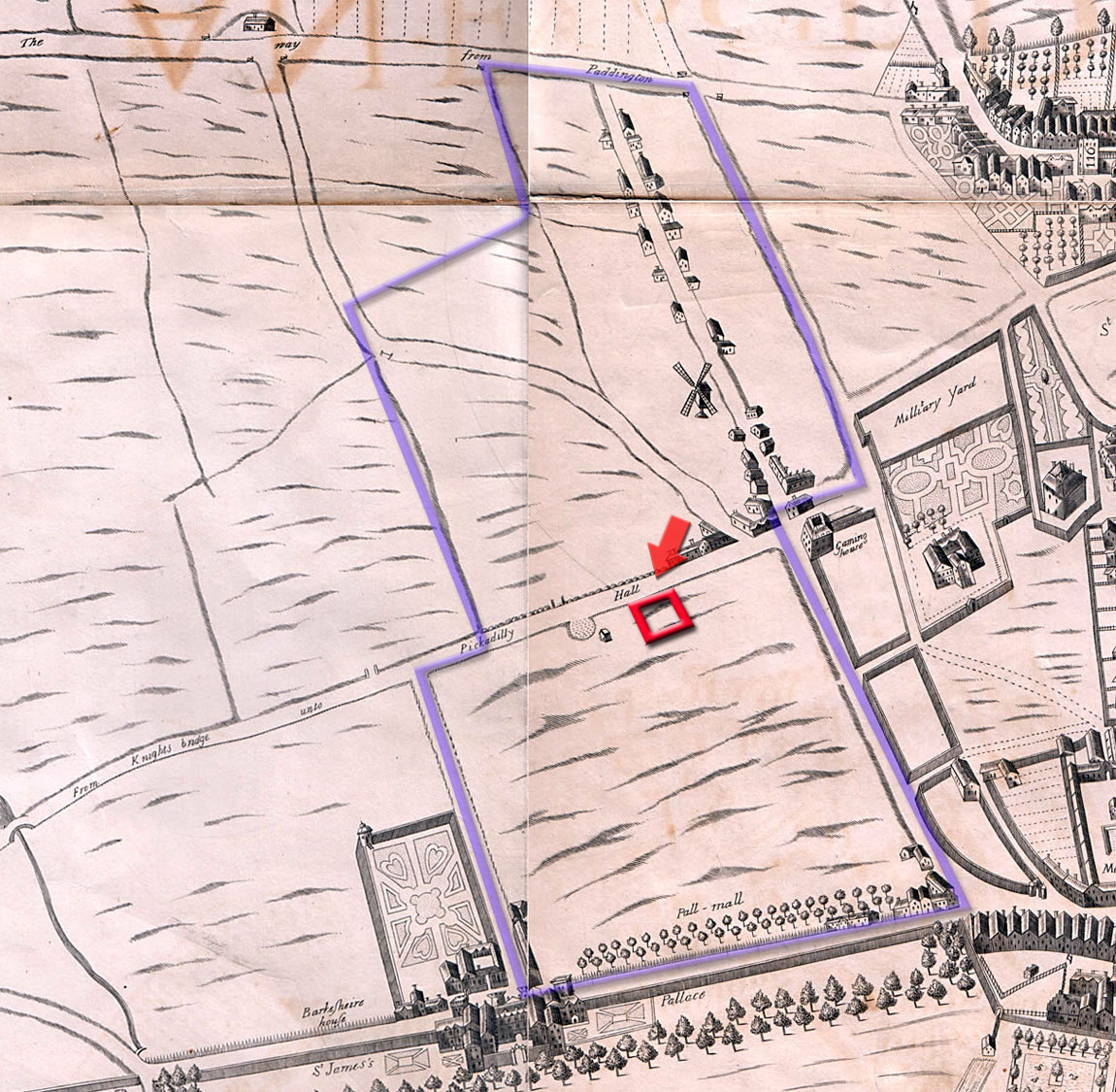
In this map - to which I have added the future borders of the parish in blue - we can see that 101 years before Thomas and Hannah were married, the Parish of St James Westminster simply didn't exist. It hardly could, since there was no St James's church in 1658, and indeed, there were no houses, except for a handful along the road with the windmill, which for obvious reasons would be named Great Windmill Street in later years. In 1658 this rural area was part of the larger parish of St Martin-in-the-Fields.
Very soon after the map was drawn, a scramble for the development of the land began, as London expanded. In 1662 Sir Henry Jermyn was granted permission for building development of new houses on lands he owned. The residents would require a church, so Jermyn set a side a piece of land for a new one - St James's - which I have outlined in red in the map above.
The famous architect Sir Christopher Wren was engaged to design the church:
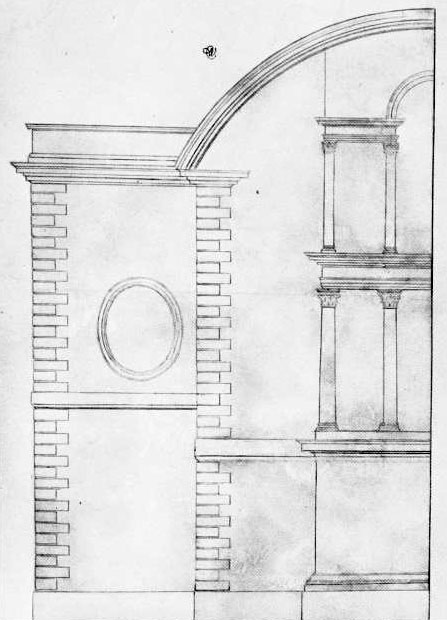 xxxxxxx
xxxxxxx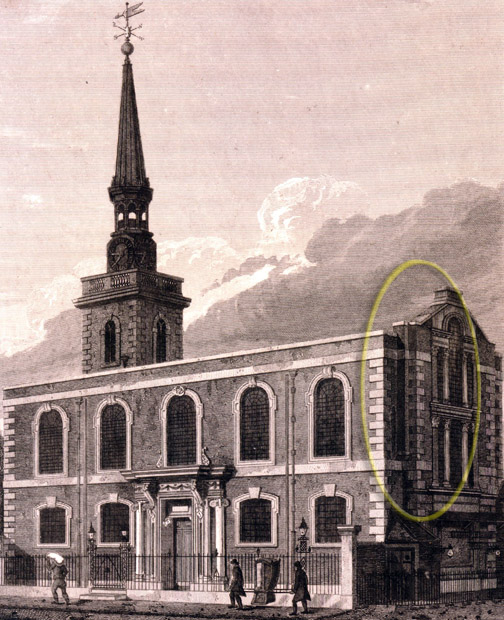
Above left we see one of Wren's original drawings of the church, initialled by Wren himself. Clearly he was checking the grace and harmony of the proportions of the components at the eastern side of the church. In the engraving on the right, drawn by J Coney in 1812, circled in yellow, we can see that the final church ended up a little different from the sketch.
It looks great on the drawing, but somehow the finished church - which was completed in 1683, and was still a precinct of the parish of St Martin-in-the-Fields for the first few years of its existence - ended up not being one of Mr Wren's most eye-catching accomplishments:
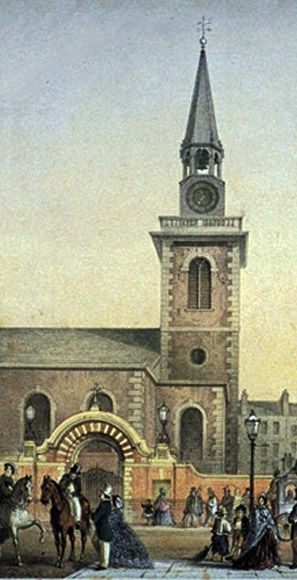 Left: St James Westminster in 1856 [Artist: Robert Dudley]
Left: St James Westminster in 1856 [Artist: Robert Dudley]
In its early years, the church steeple developed an alarming tilt, and had to be rebuilt.
Anyhoo, as mentioned, in the late 1600s, the race was on to develop the land in this parish, as London boomed and thrived and expanded.
Below I have laid the exact locations of some of London's later streets upon the field boundaries and lanes of 1658:
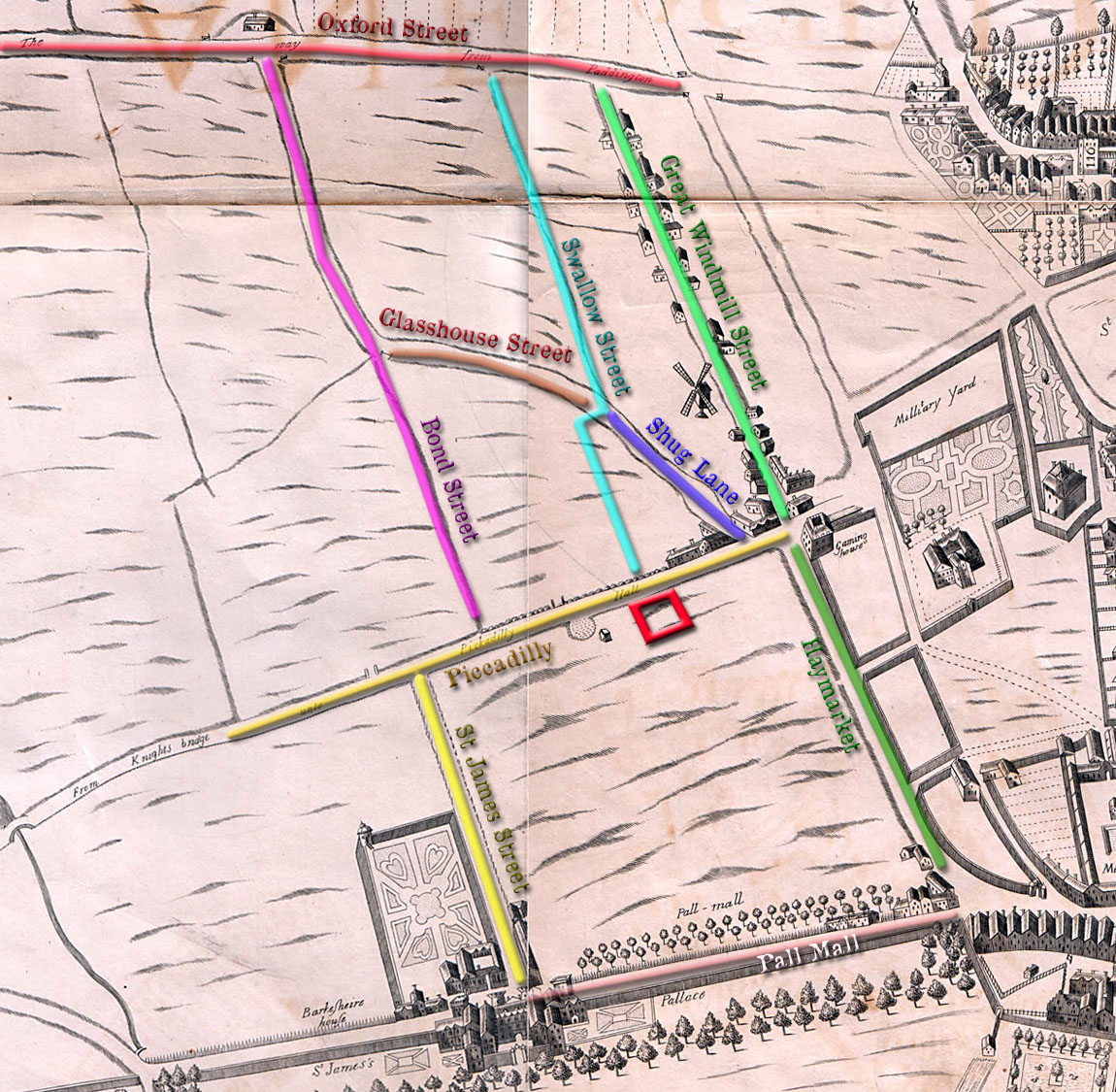
And if you - like I - love to compare maps, below I have laid the 1658 map and the c1720 map side by side with the same colour scheme:
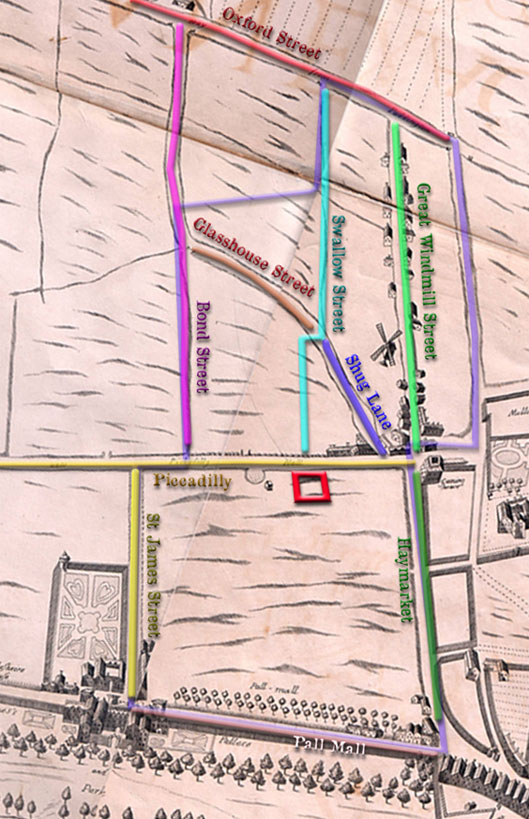 xxx
xxx
From the above we can see that in 62 years between 1658 and 1720, all of those open fields were developed into houses, with abundant profits for all involved.
To help narrow down the dates of this development, below we see a legal paper drafted in 1691 for the Middlesex Sessions, the purpose of which was to seek approval for public expenditure for the paving of one of those new roads in the parish of St James. The road was Swallow Street - shaded in turquoise in the maps above. It's the road where Thomas Partleton would reside, as we will see later:

Clearly there were already new houses along Swallow Street in 1691. I've unearthed some fascinating stories about the legitimate vs illegitimate battle for this development, but that will have to wait, or we'll lose track of our Thomas Partleton. The paving approved in the document can be seen in later drawings of Swallow Street as setts or cobblestones. Unfortunately, in spite of its narrowness in places, Swallow Street became very heavily used as a thoroughfare between Piccadilly and Oxford Street, and the new paving was clattered by hooves and cartwheels into a rutted muddy mess.
My point - which I've taken quite a while to come round to - is that it's no use looking for any Partletons - or anyone else - in St James much before 1700 'cause the only residents are cows and sheep grazing in the fields.
But of course, we do want to go back in time; part of our task is to understand where Thomas Partleton came from, apparently from nowhere. Why are there no Partletons in London before 1759? To help with this, let's bring back that marriage record:

In the above, Thomas' bride Hannah on her wedding day signs the register clearly as Hannah Dunsdon with a pretty hand. However, though it's not very clear in the scan - the church clerk seemingly wrote her name as Dunson - apparently without a 'd'.
This illustrates the difficulty as one progresses backwards in time: there is an ever-increasing chance, in the days before standardisation of spellings, that names are spelled differently, phonically, or carelessly, or simply according to the personal preference of the writer.
Let's check out Hannah's baptism of 1736 at St James church on Piccadilly:

Clearly she is born as Hannah Dunsdon, though this time, we note that the clerk preferred to spell Hanah with only one 'n'.
Hannah is to be the eldest of five kids, all christened, in the 1730s and 1740s, in the parish of St James, as Dunsdon. But her parents' marriage can't be found. It should be easy - Dunsdon is a rare name. But of course it could be spelled Dunston, Dunstan, Dunson, Dunton. So this trail goes cold.
In which case we must look for more clues. Let's have another looksie at the marriage record:
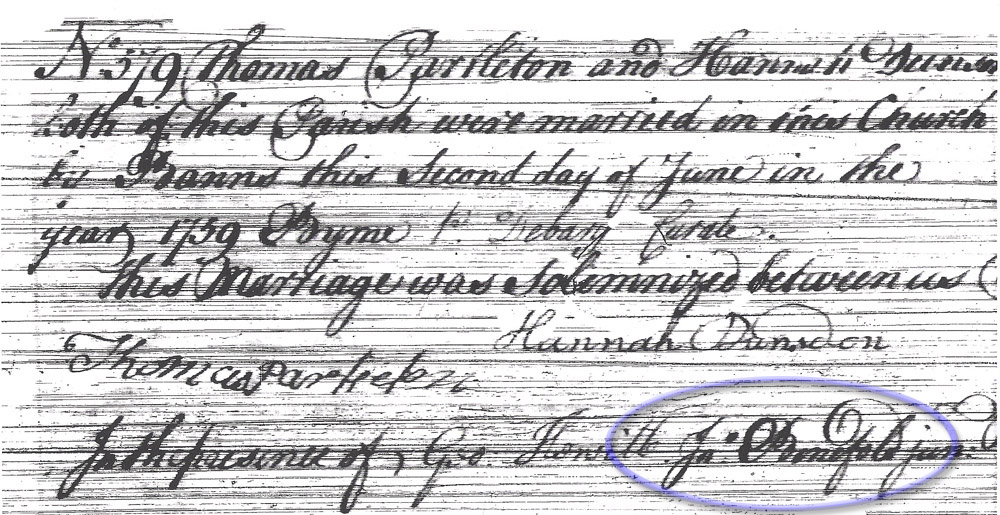
Wedding witnesses sometimes reveal something useful... the first witness, George Hewitt, may be too hard to trace among a surfeit of Hewitts and Hewits, and I'm not even going to attempt it, but perhaps if we follow the other signature, which looks like John Benifold, circled in blue above, he may lead us somewhere?
Benifold is an unusual surname, which is a good thing when it comes to genealogy. And when we search for John Benifold, we find his obituary in 1793, albeit with a different spelling...

Doh.
Mr Benefold was merely the parish clerk.
And there we have it. The London trail is stone cold.
But the pursuit is not over... on the next page we're going to leave London and take a trip to the other end of the country in an attempt to find Thomas' roots. Click here to continue
Do YOU know any more to add to this web page?... why not send us an email to partleton@yahoo.co.uk
Click here to return to the Partleton Tree 'In Their Shoes' Page.
